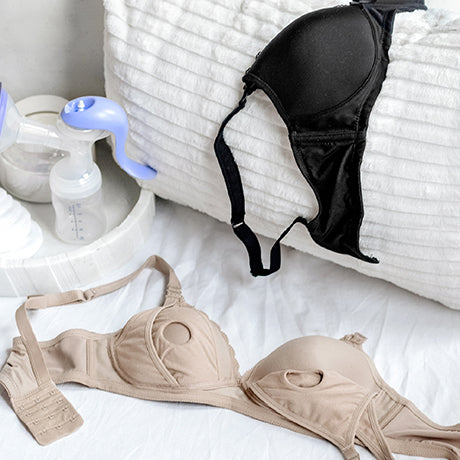Thrush and Breastfeeding: Symptoms and How to Treat the Common Infection
 Breastfeeding moms, have you noticed white patches on your baby’s mouth or tongue that do not seem to wipe away easily? Or are your nipples red, cracked, itchy, or burning? These are common symptoms of Thrush, a yeast infection that affects both moms and babies. Thrush is not a medically serious condition, but can linger and cause prolonged irritation for both mom and baby. Read through some of our Thrush warning signs so you can be familiar with the symptoms and contact your health care provider if you are worried about your baby’s appetite or if you’d like more advice about treating the infection.
Breastfeeding moms, have you noticed white patches on your baby’s mouth or tongue that do not seem to wipe away easily? Or are your nipples red, cracked, itchy, or burning? These are common symptoms of Thrush, a yeast infection that affects both moms and babies. Thrush is not a medically serious condition, but can linger and cause prolonged irritation for both mom and baby. Read through some of our Thrush warning signs so you can be familiar with the symptoms and contact your health care provider if you are worried about your baby’s appetite or if you’d like more advice about treating the infection.
Most cases of Thrush are brought on by antibiotics; if you’re a breastfeeding mom currently taking an antibiotic, make sure to pay special attention to any nipple or breast pain you feel while nursing or if your baby exhibits any of the following signs. Antibiotics naturally clear the good bacteria you carry which keeps your yeast levels in check. Thrush occurs when your bacteria levels are imbalanced and you’re susceptible to a yeast infection. Moms and babies have the ability to pass Thrush back and forth through breastfeeding. Your baby can develop Thrush even if you show no symptoms; some experts say that babies can develop Thrush through bottle and pacifier overuse, but no concrete explanation has been found yet.
Signs to watch for with your baby:
- White patches on the tongue, inside of cheeks or lips. These patches will not be easily wiped away.
- Mouth tenderness, fussiness, reluctant to nurse or bottle-feed.
- Diaper rash
Signs to watch for with yourself:
- If your nipples are any of the following: red, itchy, cracked, or burning.
- A vaginal yeast infection
- Deep, shooting breast pains not commonly associated with latching or positioning.
You and your baby might exhibit none of the above symptoms and still experience Thrush.
Breast and bottle care will be very important when treating Thrush. Make sure to wash your breast and nipples with hot, soapy water between feedings. Some pediatricians will recommend that you let your nipples air dry rather than use a towel. Boil water and submerge all breast pump parts, bottles, and pacifiers that you use for at least twenty minutes. Sterilizing all of your breastfeeding equipment will help fight against the infection. If you are worried about your baby’s appetite or the Thrush lasts beyond a few weeks, contact your health care provider to figure out a new plan of action. There are some treatments a doctor can prescribe that will effectively clear up Thrush.
The post Thrush and Breastfeeding: Symptoms and How to Treat the Common Infection appeared first on Leading Lady.





